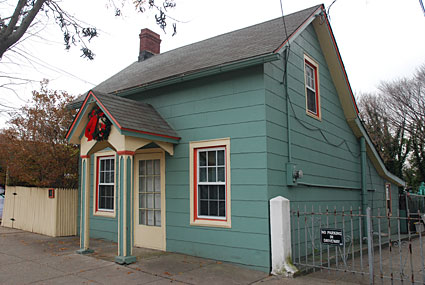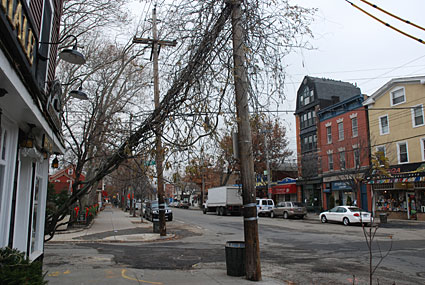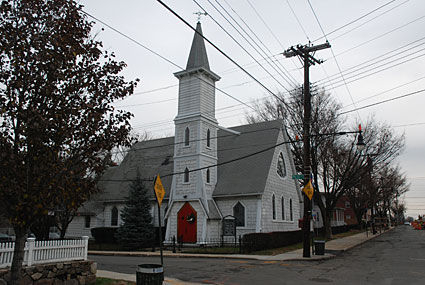City Island, Bronx - part 1
A winter trip to a small island in the north of New York
(Photos/words © urban75, Dec 2007)
Approximately 1.5 miles long by half a mile wide wide, City Island sports a population of around 4,500 souls and sits in the New York City borough of the Bronx.
Located at the extreme western end of Long Island Sound (south of Pelham Bay and east of Eastchester Bay), City Island is connected to the mainland at its northern end, with a short road bridge linking to Pelham Bay Park.
The Siwanoy band of Lenape Indians were the original inhabitants of the land before they were swiftly turfed out of town by English settlers in the mid 15th century.
Housing a small farming community, the island changed hands several times until it was bought by a Benjamin Palmer of New York in 1761.
Palmer had big plans of developing a rival port to New York and boldly mapped out the land into different plots designated as shipyards, docks, business, farms, homes, schools, and houses of worship, along with streets, paths, and access routes.
He successfully appealed to the British Crown to obtain a patent extending the ownership of waterfront properties to 400 feet out from the high tide mark under water, and this patent - known as the "Palmer Grant" - remains unique to City Island and has defeated all attempts to overthrow it in court.
In line wit his grand vision, Palmer changed its current name of Minefer's Island to City Island, but found his plans dashed when the American Revolution took hold.
The war depleting the finances of him and his investors, sixty years would pass before the island started to be developed into the community we see today.

With its old style houses and white wooden fences, the island has the look and feel of a small New England fishing village.

Christmas decorations, City Island Avenue.

A house that looks like a Dolls House.

Early Ruth Antiques and Art Gallery, 319 City Island Avenue.


Street view showing curious tree growth.
The tall building on the right was City Island's first 'skyscraper,' reaching a heady five stories when it was built in 1898. It remained the tallest structure on the island until the residential 6-story Pickwick Terrace was constructed in 1963.

Fading sign for the long-gone Ratsey Sail business.
We would have liked to have found out a lot more about the island's history, but sadly  The City Island Museum on Fordham Street
suffered fire damage in July 2007 and was still closed to the public. The City Island Museum on Fordham Street
suffered fire damage in July 2007 and was still closed to the public.

Looking along City Island Avenue.


Grace Church, built in 1860s from the timbers of shipyards.
Note the mass of cables suspended above the streets: residents have been battling with utility companies to have these moved underground because they argue that the utility poles are overwired and unsightly.
Moreover, many poles are leaning over at perilous angles, increasing the prospect of them being knocked over in high winds or heavy rain conditions, causing interruption to services.
Con Edison aren't keen on the idea at all, insisting that the job would be too expensive and cables may short out due to underground flooding.

Throughout 2007, around half the island's water mains and sewer mains have had to be dug up and replaced, due to old age.
This major project will result in all of City Island Avenue being repaved.

Lobster Box and Fish Box restaurants. Being mid-winter, most of the restaurants were closed when we walked about.
Despite its fishing heritage, The New York State Department of Health has banned the eating of all shellfish from the waters of City Island because of dangerous levels of pollution and diseases.
|
|

